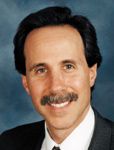Article
Surviving a TASS outbreak underscores key lessons
Author(s):
Las Vegas-Experience with a toxic anterior segment syndrome (TASS) outbreak has reinforced several important points about TASS prevention, treatment, and outbreak investigation, said Stanley J. Berke, MD, at the annual meeting of the American Academy of Ophthalmology (AAO).

Speaking in the Spotlight Session on TASS and Endophthalmitis, Dr. Berke outlined those lessons after describing how he and colleagues at the Island Eye Surgicenter, Carle Place, NY, "survived" a TASS outbreak that occurred in the fall of 2005. Dr. Berke is chairman of quality assurance at that facility and an associate clinical professor of ophthalmology and visual sciences, Albert Einstein College of Medicine, New York.
Between Sept. 22 and Oct. 31, 2005, 37 cases of TASS (3.3%) were identified among 1,100 cataract surgeries performed at the Island Eye Surgicenter. A comprehensive investigation, which began in-house and subsequently was expanded outside, eventually led to the discovery that the TASS outbreak was related to an endotoxin in the balanced salt solution ([BSS] Endosol, Advanced Medical Optics [AMO]).
Nine cases occurred on the first day of the outbreak, and all were operated on by a single surgeon who noticed significant anterior chamber reaction in the eyes at the postop Day 1 visit. The subsequent 28 cases of TASS were identified based on early onset of symptoms within the first 12 to 18 hours after surgery. One of those cases involved a patient of Dr. Berke's operated on in mid-October.
To determine the cause for the outbreak, trending and tracking of patient information on the surgical center's endophthalmitis investigation spreadsheet was begun immediately.
In addition, a staff review of all aseptic techniques, terminal cleaning of the ORs, and instrument processing protocols was initiated. More than 50 environmental cultures of the surgical center were performed along with spore testing of every instrument load that went into the autoclaves. All turned out to be normal.
"Unable to identify a cause, we asked 'Who you gonna call?' The answer was not 'Ghostbusters,' but Dr. Nick Mamalis at the John A. Moran Eye Center in Salt Lake City," Dr. Berke said.
Dr. Mamalis received a grant from the American Society of Cataract and Refractive Surgery (ASCRS) to study TASS and endophthalmitis outbreaks. The call to him was made Oct. 14. Then Nov. 1, AMO was contacted when its BSS was suspected as the cause.
"We learned from AMO that other sites nationwide were experiencing similar problems and that an active investigation was under way. Posting queries on the presumed Endosol BSS-related TASS outbreak on the ASCRS and American Glaucoma Society Web sites led to the identification of approximately 500 cases at 25 sites across the country," Dr. Berke said.
The information was shared with Dr. Mamalis, AMO, and staff at the FDA and Centers for Disease Control and Prevention (CDC), and AMO issued a national safety alert regarding the BSS on Nov. 10, 2005.
The CDC performed endotoxin testing in seven 500-ml bottles of BSS involved in TASS cases at his center, Dr. Berke said. Only one came back positive, with an endotoxin level of 1.085 EU/ml, which was more than fourfold over the allowable limit of 0.25 EU/ml. Endotoxin in the other six bottles was below the allowable limit.
"We feel strongly that all ophthalmic surgical solutions should be completely free of endotoxins, and getting this standard revised immediately by the FDA should be a major objective of both the AAO and ASCRS," Dr. Berke stated.
Cleaning protocol
Dr. Berke noted the experience with the TASS outbreak has reinforced the importance of scrupulously examining the process of cleaning and processing surgical instruments and of maintaining careful documentation in case the need arises to investigate an outbreak.
Newsletter
Don’t miss out—get Ophthalmology Times updates on the latest clinical advancements and expert interviews, straight to your inbox.




